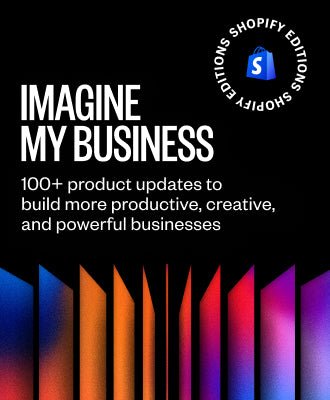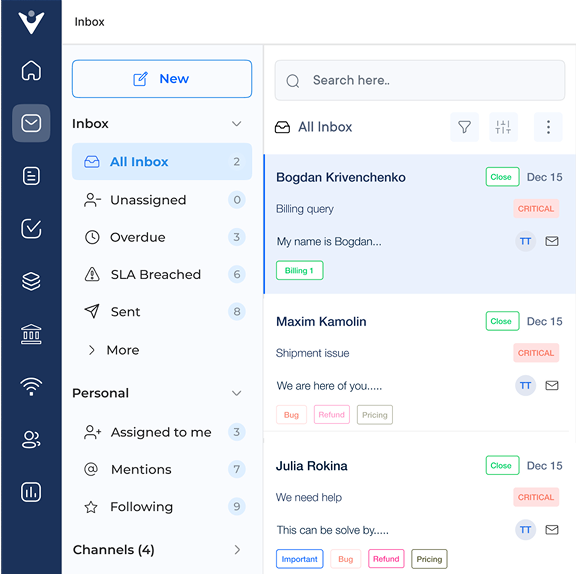1. Assess Current Sales Performance
Assessing current sales performance is the essential first step in creating an effective sales readiness program. It involves a thorough analysis of key metrics like conversion rates, average deal size and sales cycle length to uncover trends, strengths or improvement areas.
Surveys, assessments and interviews with both sales teams can provide valuable insights. Evaluating existing training methods also helps pinpoint what’s effective and what needs enhancement in your sales enablement efforts.
Pro tips:
- Conduct a thorough audit of sales data, combining quantitative metrics with qualitative feedback from key stakeholders.
- Utilize standardized assessments to benchmark sales reps’ skills against industry standards and company expectations.
- Develop a detailed map of the current sales training landscape, highlighting content, delivery methods and engagement levels.
2. Define Clear Objectives
Defining clear objectives is crucial for guiding your sales readiness program. Set specific, measurable goals like “increase win rates by 15% in six months” or “reduce new hire ramp-up time by 30%.”
Ensure the objectives align with broader business goals to demonstrate the program’s value and gain leadership support. Establish key performance indicators (KPIs) tied to the objectives to track progress and assess the program’s effectiveness over time.
Pro tips:
- Hold workshops with sales leadership to establish SMART (Specific, Measurable, Achievable,
- Relevant, Time-bound) objectives for the sales readiness program.
- Connect these objectives to key business metrics to showcase ROI to stakeholders.
- Create a KPI dashboard for real-time visibility into the program’s progress and impact.
3. Develop a Comprehensive Curriculum
A well-structured curriculum is the foundation of an effective sales readiness program. It includes creating tailored learning paths for various roles, from SDRs to account executives and sales managers, ensuring a clear progression in skills.
The curriculum should encompass diverse topics, including deep product knowledge, effective sales techniques and vital soft skills like communication. Incorporating industry insights equips sales reps to engage in more meaningful conversations with prospects and customers, enhancing their effectiveness.
Pro tips:
- Perform a skills gap analysis for each sales role to shape targeted learning paths.
- Collaborate with subject matter experts across departments to ensure the curriculum addresses every crucial aspect of the sales process.
- Incorporate real-world scenarios and case studies into the curriculum to make the learning more practical and applicable.
4. Implement Diverse Learning Methods
Using a variety of learning methods is essential to engage sales reps with different preferences. Combining in-person and virtual training offers flexibility, while in-person sessions excel at team bonding, virtual training provides convenience.
Incorporating microlearning and just-in-time resources ensures reps access bite-sized information precisely when needed, reinforcing key concepts. Role-playing and simulations offer safe spaces for hands-on practice, allowing reps to refine their skills before engaging with real customers.
Pro tips:
- Create a blended learning strategy that mixes self-paced e-learning modules with live virtual workshops and in-person training sessions.
- Build a library of microlearning resources, like quick videos and infographics, for easy access before client meetings or calls.
- Incorporate regular role-playing exercises to simulate challenging customer scenarios, offering immediate feedback and coaching.
5. Leverage Technology
Harnessing technology is crucial for scaling and enhancing a sales readiness program. A Learning Management System (LMS) serves as a centralized hub for delivering, tracking and managing training content, streamlining administration while providing insights into learner engagement.
Integrating sales enablement tools, like content management systems and conversation intelligence platforms, further amplifies training impact by granting reps quick access to essential materials. AI-driven personalized learning takes it a step further, customizing content to meet each rep’s unique needs and learning style, maximizing training efficiency.
Pro tips:
- Select an LMS that seamlessly integrates with your current tech stack and provides powerful analytics features.
- Implement a sales enablement platform that curates and recommends relevant content tailored to each sales stage.
- Consider AI-driven learning platforms that can design personalized learning paths based on individual rep performance and goals.
6. Establish Ongoing Coaching and Mentoring
Ongoing coaching and mentoring are vital for enhancing continuous improvement. Equip managers with effective coaching techniques to provide regular, constructive feedback and identify areas for growth in their team members.
Implement peer-to-peer mentoring programs to encourage knowledge sharing and collaboration within the sales team, allowing seasoned reps to impart insights to newcomers. Integrate regular feedback and performance reviews to ensure continuous development with program goals.
Pro tips:
- Establish a “coach the coach” program to empower sales managers with essential skills and tools for effective coaching.
- Pair experienced reps with newcomers in a structured mentoring program, clearly defining goals and expectations for their relationship.
- Implement regular one-on-one coaching sessions and team reviews to ensure consistent feedback.
7. Measure and Analyze Results
Measuring and analyzing results is vital for assessing the impact of your sales readiness program. Track training completion rates to gauge engagement, but also focus on how it translates to actual sales performance.
Collecting feedback from sales reps yields valuable insights into the program’s effectiveness and highlights areas for adjustment. The blend of qualitative and quantitative data offers a comprehensive view of the program’s ROI, justifying ongoing investment in sales capacity initiatives.
Pro tips:
- Create a dynamic analytics dashboard that connects training metrics to key sales performance indicators.
- Regularly conduct surveys and focus groups with sales reps to gather valuable qualitative feedback on the program’s effectiveness.
- Implement A/B testing of different training approaches to identify the most effective methods for your team.
8. Continuously Refine and Improve
Continuously enhancing your sales readiness program keeps it relevant and effective. Regularly update content based on feedback and performance analysis to address gaps by revising modules, creating new resources or retiring outdated material.
Staying abreast of industry trends and best practices is essential for maintaining a leading-edge program. Engage in ongoing research, attend industry conferences and network with sales enablement professionals. Adapting to evolving business needs ensures the program aligns with and supports your organization’s strategic goals.
Pro tips:
- Implement a regular content review cycle with input from subject matter experts and sales leaders to keep materials accurate.
- Launch a “voice of the sales rep” initiative to consistently gather and act on frontline feedback.
- Establish a cross-functional sales readiness committee that meets quarterly to assess program performance and coordinate necessary adjustments.
Sales readiness vs. Sales enablement vs. sales Training
Here’s a concise table highlighting the key differences between sales readiness, sales enablement and sales training:



















